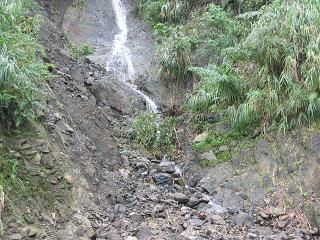|
Debris flow: materials of pellet and water or mud in the rock stratum depart from each other in the course of flowing or separating. This departing process reduces not only the small material proportion in the rock stratum, but also the thickness of it. In Taiwan, debris flow takes place most in hillsides or mountain valleys when the torrential rain comes. Main characters of debris flows are its rapid flowing speed, high consistency of silt, strong eroding strength, and heavy chocking power. The thickness volume of the solid substance in the debris flow probably lies between 27% and 75%, and it weights about 1.45 to range of 2.24 tons / stere. The characteristic of Debris flows’ motion differ from that of landslides; it also differs from the sand-transporting phenomenon of river courses. On the contrary, it lies between these two different phenomenons.
Debris Flows Most Happen in Areas as Following: |
